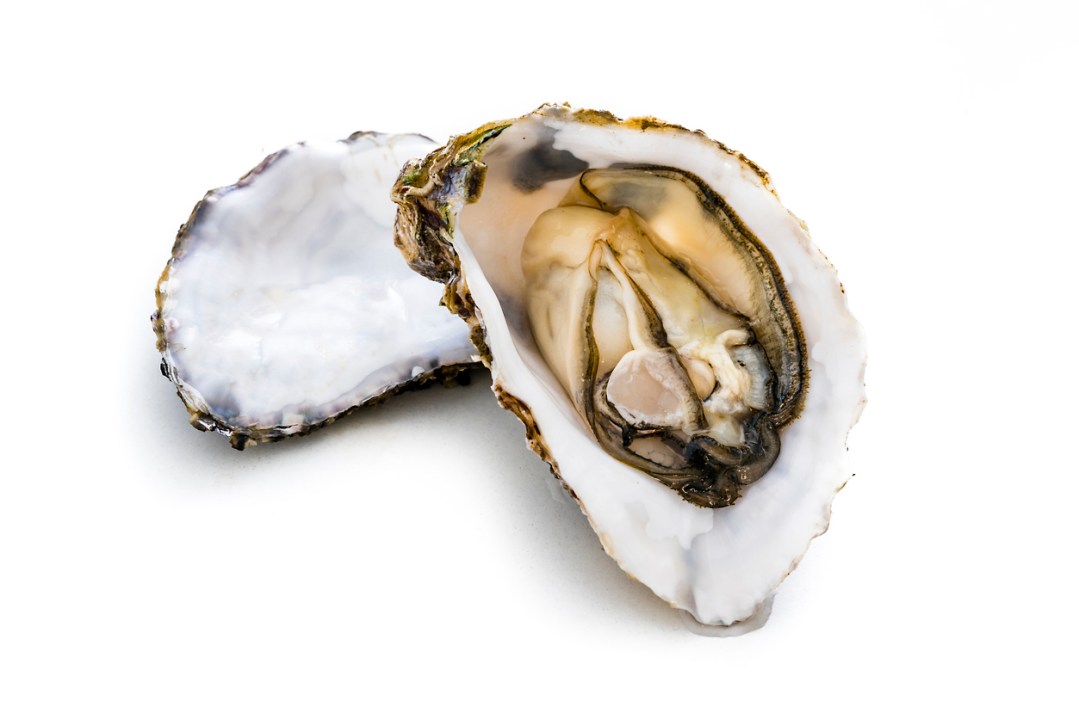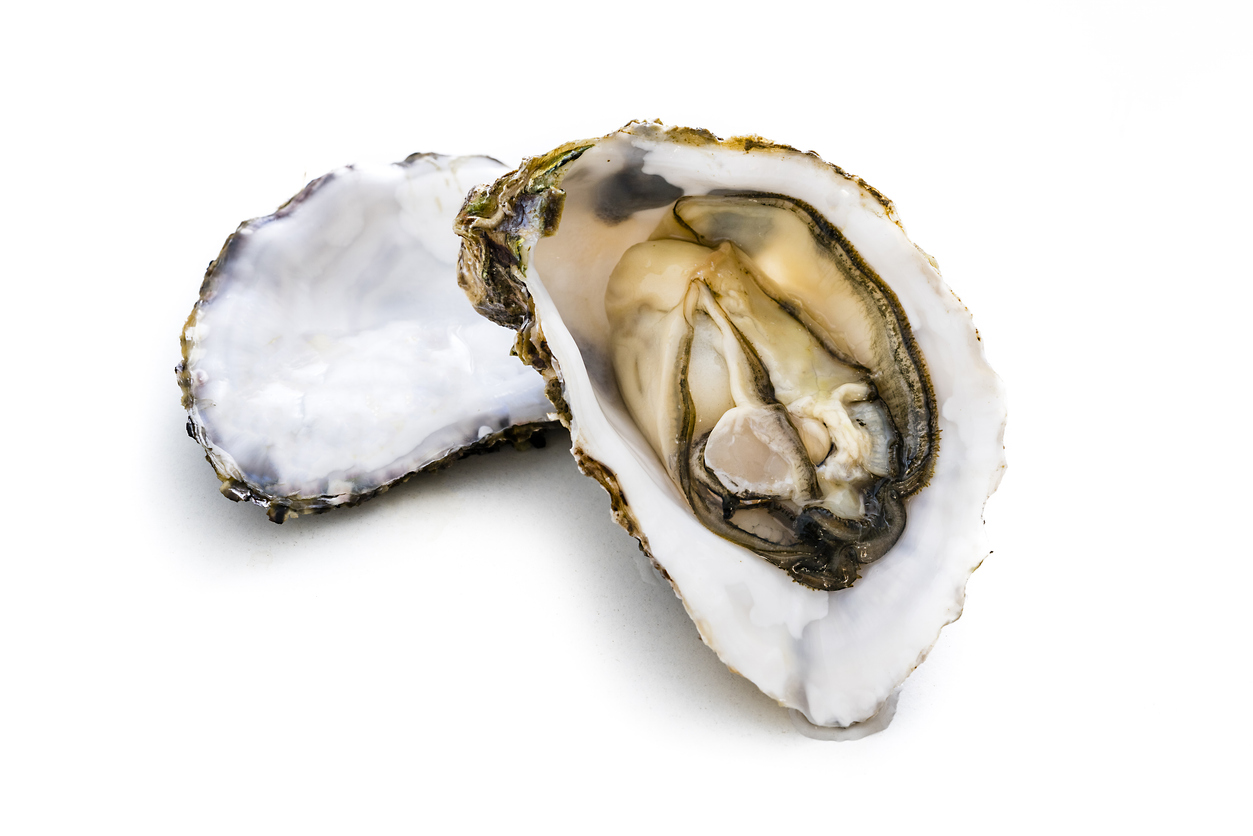I’m sitting on a stone terrace in the winsome south Breton port of Sainte Marine, which oversees France’s prettiest river (the Odet), and I’m excitedly tucking into a dozen gleaming Morbihan oysters. I am doing this partly because I am writing about travel in Brittany and oysters are very much part of the package here – you come to Brittany, you must consume oysters (also cake, cider, biscuits, tinned sardines and chunky buckwheat crepes). But I’m also eating oysters because I really love oysters.
The idea is bad, the texture is worse – slimy, crunchy feathers and bones
At this point I imagine a reasonable percentage of Spectator readers will be wincing. Because oysters are a divisive issue. Some, like me, seize any opportunity for a demi douzaine on the half shell, others are much more meh, and a hardcore of bivalve-refusers find the whole idea repulsive. These skeptics simply say: look at them, it’s like someone went for a long walk around a sooty steel town, then coughed up a wad of polluted phlegm. Who on earth would want to touch that, let alone devour it with crusty bread? As Jonathan Swift famously opined: it’s a bold man who first ate an oyster.
And, sometimes, as I face these gnarly natural ashtrays full of oomska, I wonder. Do I really like these things? Is it actually some affectation? But then I answer: no, I really love ‘em. Good oysters give you a zing of energy, an essence of the fertile sea. I can taste why they are an aphrodisiac.
So, why do we find some foods disgusting, and why, more peculiarly, do we frequently overcome this reflex and tuck in, nonetheless? One reason for the aversion might be that horrible-seeming foods are generally unpleasant. Take insects. I’ve eaten ants in Mexico, big fat worms in Oz, tarantulas in Cambodia, deep-fried grasshoppers in Thailand, and every time I’ve thought, ‘ah, that’s why we don’t eat insects’. Or worms and spiders. They might well be a grand source of protein, but I will never forget the nice ant ladies of Siem Reap who liked me so much they gave me the enormous Queen ant to eat, as a treat. I had to get it down out of politeness; it still makes me shudder to this day.
However, the ‘looks horrible = tastes horrible’ equation can easily break down. For example, the single most unpleasant-looking thing I have ever eaten is balat (readers eating breakfast, turn away now). Balat is a half-formed duck embryo parboiled just before it hatches. The idea is bad, the texture is worse – slimy, crunchy feathers and bones. Meanwhile, the sight of this coiled, reptilian embryo staring accusingly you at as you eat it far too young – like you are some gourmet pedo, the Gary Glitter of gluttony – is faint-worthy. And yet, nom nom. Balat are delicious, a handful of meaty ducky savoury egginess.
Another explanation might be that we are willing to try disgusting-looking foods because it is sensible, in evolutionary terms, to do so. The first man who ate an oyster, after all, was also the first man to find a decent lunch along the sea shore, even if he lacked a good mignonette. He got a non-trivial calorific advantage over his confreres, and probably had loads more kids as he pinged about the place, tumescent from all that zinc. I like this explanation, because it makes logical sense: omnivores do best because they are the culinary opportunists. If you can detect the delicate sushi potential in, say, the grotesque abalone, you will go far.
However I also see the evolutionary confounders. That first guy to shuck the oysters of the Odet would also be the kind of guy to think, ‘hey, I did pretty did well on the riverbank, let’s try that weird red-and-white toadstool in the mystical forest of Broceliande’ – and then he dropped dead. And this is quite a hard logical obstacle to overcome. It was actually the second mushroom picker in Broceliande who benefited from the insane experimental courage of the now dead oyster-pioneer. The second guy knew not to eat that toadstool and try the ceps instead, perhaps fried with Normandy butter. But then he was still brave and curious, and he would later have died after experimenting with those scary-looking yew berries, and thus the third came along, and so on.
Maybe we like disgusting foods because they are disgusting: that is to say, it is at the extreme edge of pleasure where you find the greatest delight, because the joys come with a seasoning of emotional or physical pain. Like a sweet cocktail dashed with Angostura bitters. One of the most delicious fruits in the world is the ugly, creamy, custardy durian: yet it smells so bad (think broken sewers) that hotels and airlines in the tropics often ban them, and have special ‘no durian’ signs to drive home the message. However, whenever I eat durian and fight the gag reflex to get to the yummy fruit, I wonder: is the aromatic disgustingness somehow creating an illicit appeal?
I believe so, and it’s here, for context and illustration, that we need to check out another human appetite: the libido. Everyone knows that some of the best sex comes right on the edge, where it shades into the ick and the eek. See the appeal of BDSM. Why on earth do people like to inflict pain to heighten sexual pleasure? It’s big question, and no one has a total answer, but note how people also like to eat curries so hot they literally burn your mouth, and induce even greater pain the following day, and yet people scoff them with gusto. Indeed, studies show that food in Asia is getting ever hotter over time, in a kind of Scoville chilli-rating arms race, as people seek out the sadomasochistic delights of an even spicier laksa, vindaloo or Vietnamese pho.
Here, I reckon, is a portion of the solution. One reason we like disgusting food is because we are programmed to like sex – which is also borderline disgusting, as Freud famously concluded (and yay for that, who would want sensible sex). All of which means that when you next order half a dozen Helford natives, you are doing the culinary equivalent of seeking out a forbidden act. On a night train. With a stranger. Somewhere near Liverpool or Marseilles. I hope that doesn’t put you off.








Comments